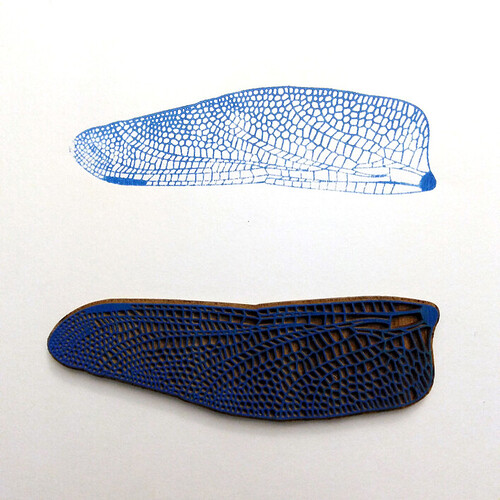It’s been a while since my last post on the subject of wood block printing. I’ve been experimenting with engraving my wood blocks and have some really good results. Here is a Dragon Fly’s Wing I’ve been working on. The total length of the wing is a little under 5.5". The engrave is made in two passes at full power at max speed. The source image has been slightly blurred to create a slight draft when the image is engraved with the vary power option. This makes finer features stronger and less likely to break.
15 Likes
